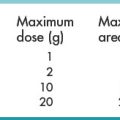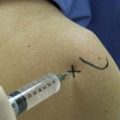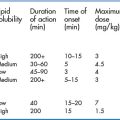CHAPTER 5 Intravenous regional anaesthesia (IVRA)
Bier block of upper limb
Intravenous regional anaesthesia (IVRA) is a simple and effective regional anaesthesia technique for painful procedures on the forearm, wrist and hand (e.g. for the reduction of a distal radius fracture). IVRA produces anaesthesia by direct diffusion of the local anaesthetic from the veins into the adjacent nerves. The main advantages of this technique are its simplicity and reliability. Its disadvantages are the lack of lasting analgesia (the block resolves almost immediately after the release of the tourniquet), the time required for preparation and performance of the block, and the obligatory delay before the cuff can safely be deflated. It is more effective (with less pain and a better reduction) than a haematoma block for the reduction of distal radius fractures and is somewhat simpler than other regional anaesthesia techniques. IVRA is only appropriate for short procedures of less than 45 minutes before tourniquet discomfort becomes intolerable.
Preparation
•
Check the equipment: a proper theatre tourniquet system is ideal but an ordinary blood pressure cuff may be used if an assistant is available to keep it inflated to the correct pressure. Check that the cuff is the correct size required and has no leaks.
•
Insert an intravenous line on the uninjured limb and ensure that resuscitation medications and equipment are available.
•
Insert a small IV cannula (22G) into the hand of the injured limb, through which the local anaesthetic will be administered.
•
Administer procedural sedation if required.
•
The patient should be in the supine position with the injured arm elevated for 1 to 2 minutes to achieve passive emptying of the veins.
•
Prepare the local anaesthetic agent to the required dilution, and calculate the maximum permissible dose for the patient’s body weight and general condition. Use only an intravenous formulation of lidocaine. Bupivacaine and ropivacaine are not suitable agents for IVRA.
Technique
•
Place the tourniquet on the arm of the limb to be blocked. Wrap the arm beneath the tourniquet with orthopaedic wool to prevent discomfort and skin damage. Ensure that the tourniquet cannot accidentally deflate, become displaced or open causing a sudden release of local anaesthetic into the circulation. An adhesive bandage wrapped around the cuff will prevent accidental release.
•
Apply a 100-mm Esmarch bandage (rubber bandage) to the elevated arm. Always
slightly stretch the Esmarch bandage before applying the next wrap around the arm (enormous, damaging compression pressures can be generated with overenthusiastic application).
•
Inflate the cuff to a pressure of 100 mmHg above the systolic blood pressure, or at least 300 mmHg. If a double cuff is used, inflate the proximal cuff first.
•
Inject the local anaesthetic slowly through the IV cannula in the dorsum of the hand.
•
Lidocaine is the most commonly used drug for intravenous regional anaesthesia. Either a large volume of dilute solution of local anaesthetic (e.g. 20 to 50 mL of 0.5% lidocaine) or a smaller volume of a concentrated drug (e.g. 12 to 15 mL of 2% lidocaine) is effective. However, smaller volumes are simpler to use and easier to inject and dilution may not be necessary for the block to function well, as long as complete exsanguination is accomplished.
•
The onset of anaesthesia is about 5 minutes.
•
After 30–45 minutes most patients become unable to tolerate the pain from the tourniquet. When the discomfort becomes unbearable or additional sedation and analgesics are required, inflate a second cuff distal to the first cuff. The proximal cuff may then be deflated, providing immediate relief of discomfort. If a double cuff system is used, inflate the distal cuff and release the proximal cuff after checking that the distal cuff is correctly inflated. This will provide an additional 15–30 minutes of working time.
•
At the end of the procedure it is important to deflate the tourniquet correctly to minimise the risk of systemic local anaesthetic toxicity. If the procedure is completed within 45 minutes after the injection of local anaesthetic, use a two-stage deflation. Deflate the cuff for 10 seconds and immediately reinflate it for 1 minute before the final release. This allows for a more gradual ‘washout’ of local anaesthetic.
•
If the procedure is completed within 20 minutes after injection of local anaesthetic, gradually release the tourniquet in several steps, with 2-minute intervals between deflations.
Complications
•
Systemic toxicity of local anaesthetic: The risk mainly comes from an inadequate tourniquet application or equipment failure at the beginning of the procedure; every precaution should be undertaken to ensure that the tourniquet is reliable and the pressure is maintained; gradually release the tourniquet in steps to prevent a massive systemic release of local anaesthetic, especially if the procedure lasts less than 45 minutes.
•
Haematoma: Use a small IV catheter; when the superficial veins are punctured during an unsuccessful attempt at placement of the IV catheter, apply firm pressure on the puncture site for 2–3 minutes. Failure to do so will invariably lead to venous bleeding during application of the Esmarch bandage.
The ‘Hill block’ is a modification of the Bier block for procedures on the wrist and hand. A single cuff tourniquet is placed on the distal forearm, an IV cannula is placed on the dorsum of the hand (facing distally), the limb is exsanguinated and 10 mL of lidocaine 2% is injected for anaesthesia. This technique reportedly causes less tourniquet pain and has fewer complications than the traditional Bier block. Apart from the mentioned differences, the rest of the technique remains the same.
Bier block of lower limb
This is an infrequently used block, but is probably underused as it provides excellent anaesthesia of the foot and is easy to administer. It is performed in exactly the same manner as the block of the upper limb, but an appropriately sized cuff is placed around the ankle and the local anaesthetic is administered into a vein in the dorsum of the foot. The same dose can be used as in the block of the upper limb; the total dose must not exceed the maximum permissible dose based on body weight.
The ‘Hill block’ is a modification of the Bier block for procedures on the ankle and foot. A single cuff tourniquet is placed on the distal leg, an IV cannula is placed on the dorsum of the foot (facing distally), the limb is exsanguinated and a solution of lidocaine 2% 10 mL plus ketorolac 30 mg (1 mL) is injected for anaesthesia (a lower total dose of anaesthetic is used with this modified method). This technique reportedly causes less tourniquet pain and has fewer complications than the traditional Bier block. Apart from the mentioned differences, the rest of the technique remains the same.
Local and Regional Anaesthesia in the Emergency Department Made







